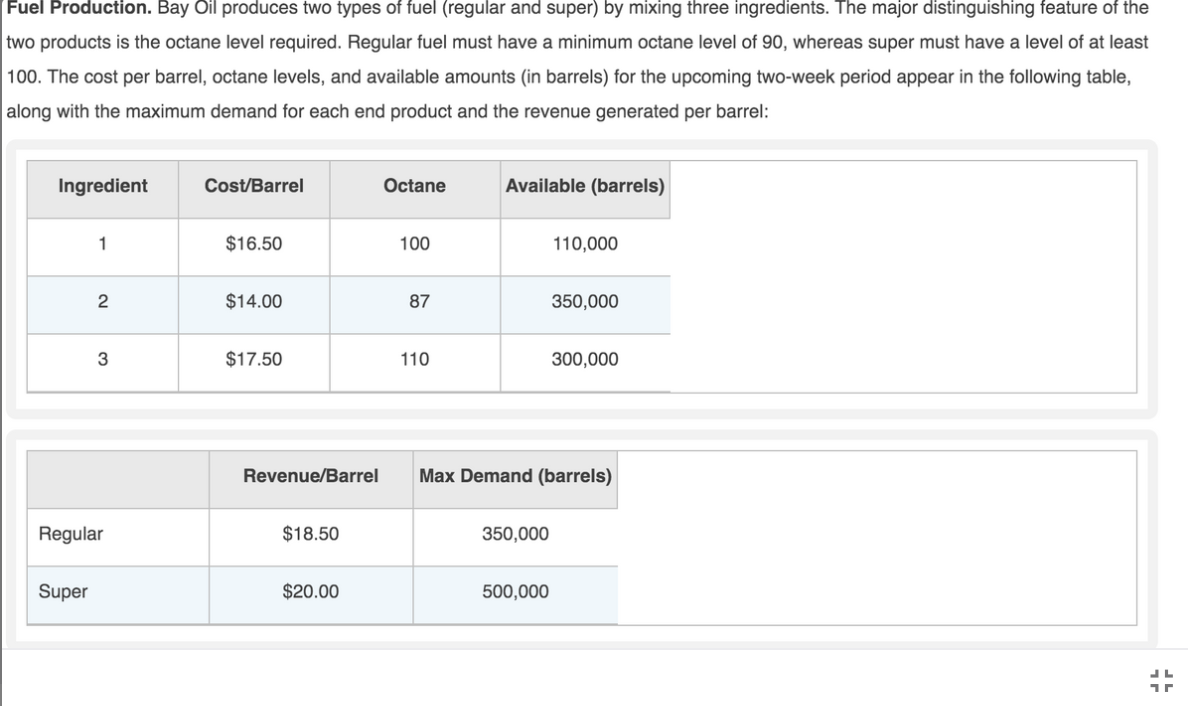Assume the maximum demand for Super is 600,000 barrels. What is the optimal maximum profit? Hints: There are six decision variables are as follows: R1: # of barrels of ingredient 1 used in Regular fuel R2: # of barrels of ingredient 2 used in Regular fuel R3: # of barrels of ingredient 3 used in Regular fuel S1: # of barrels of ingredient 1 used in Super fuel S2: # of barrels of ingredient 2 used in Super fuel
Assume the maximum demand for Super is 600,000 barrels.
What is the optimal maximum profit?
Hints:
There are six decision variables are as follows:
R1: # of barrels of ingredient 1 used in Regular fuel
R2: # of barrels of ingredient 2 used in Regular fuel
R3: # of barrels of ingredient 3 used in Regular fuel
S1: # of barrels of ingredient 1 used in Super fuel
S2: # of barrels of ingredient 2 used in Super fuel
S3: # of barrels of ingredient 3 used in Super fuel
Some calculations you would need in the constraints:
The total # of barrels for Regular would be R1+R2+R3.
The total # of barrels for Super would be S1+S2+S3.
The total # of barrels of Ingredient 1 would be R1+S1.
The total # of barrels of Ingredient 2 would be R2+S2.
The total # of barrels of Ingredient 3 would be R3+S3.

Trending now
This is a popular solution!
Step by step
Solved in 2 steps with 1 images


